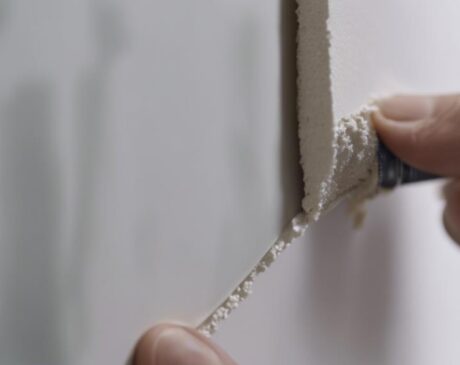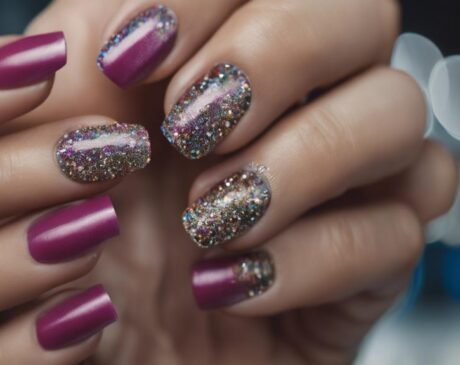Is Nail Polish Bad for Your Nails?
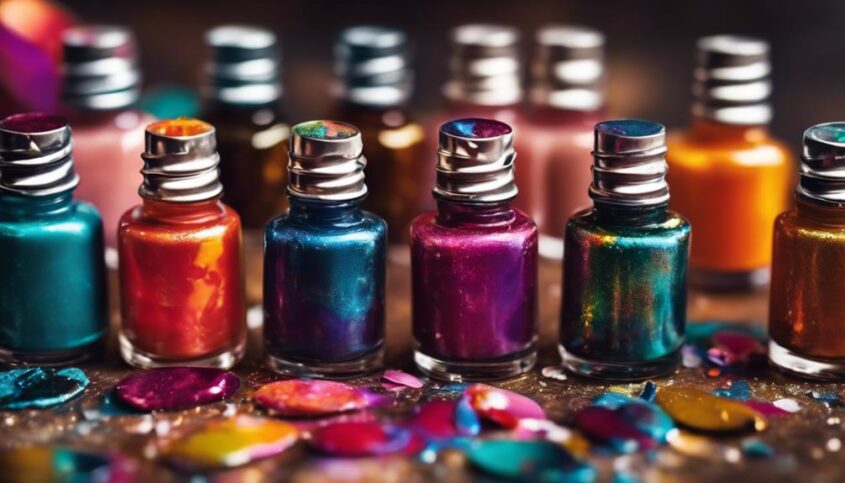
Nail polish can lead to yellowing, dryness, and brittleness of nails, as well as possible allergic reactions due to toxic chemicals. Over time, constant use can weaken nail beds and cuticles. It's crucial to use polish in a well-ventilated area, follow guidelines, and take breaks between applications. Opt for polishes with fewer harmful ingredients. To further explore healthy nail practices and safe polish removal techniques, consider other ways to maintain nail health.
Key Takeaways
- Nail polish can weaken nails over time.
- Chemicals in polish can cause dryness and brittleness.
- Frequent use may lead to discoloration and weakening.
- Allow nails to breathe by taking polish breaks.
- Opt for polishes with fewer harmful chemicals.
Potential Risks of Nail Polish
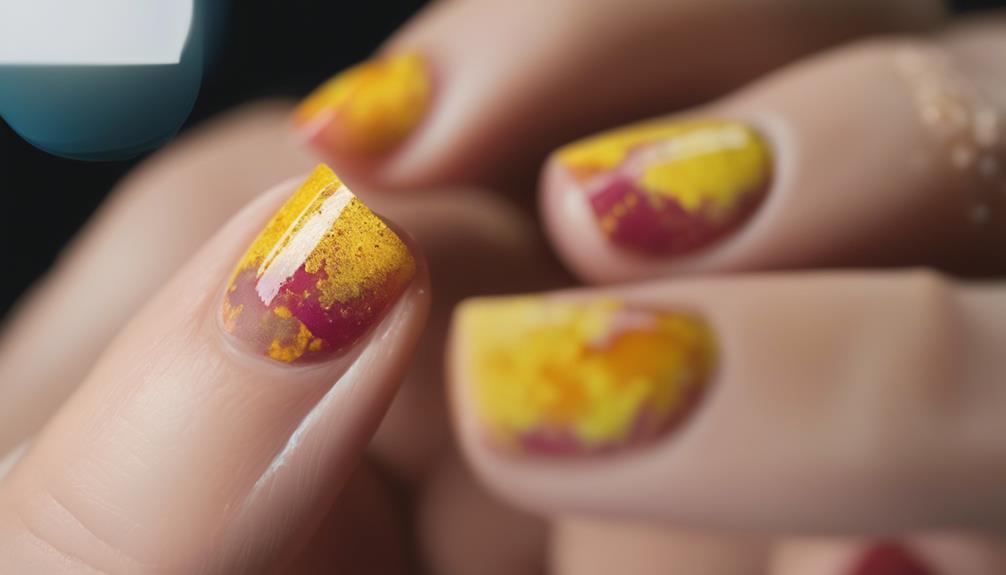
Nail polish, when used frequently and improperly, may pose potential risks to the health and appearance of your nails. While nail polish is a fun way to express creativity and style, it is essential to be aware of the possible drawbacks. One significant risk is the development of yellowing or discoloration of the nails due to prolonged use of dark or highly pigmented nail polish. Additionally, frequent application and removal of nail polish can lead to dryness and brittleness of the nails, making them more prone to breakage.
Moreover, the chemicals present in nail polish, such as formaldehyde, toluene, and dibutyl phthalate, can potentially cause allergic reactions or irritation in some individuals. These substances are known to be harmful if overexposure occurs, emphasizing the importance of using nail polish in a well-ventilated area and following recommended usage guidelines.
To mitigate these risks, it is advisable to give your nails periodic breaks from nail polish to allow them to breathe and recover. Additionally, choosing nail polishes that are free from harmful chemicals can help maintain the health and vitality of your nails while still enjoying beautiful manicures.
Ingredients to Watch Out For
When selecting nail polishes, it is crucial to be mindful of certain ingredients that may have adverse effects on nail health. To ensure the well-being of your nails, here are five ingredients commonly found in nail polishes that you should watch out for:
- Formaldehyde: Known for its hardening properties, but excessive exposure can lead to brittle nails.
- Toluene: A solvent that helps polish glide on smoothly, but inhalation or skin contact may cause nail discoloration and irritation.
- Dibutyl Phthalate (DBP): Used to increase flexibility, but it has been linked to hormone disruption and nail weakness.
- Camphor: Provides shine and durability, yet overuse can result in dry, brittle nails.
- Xylene: A solvent that helps polish dry quickly, but it can cause drying and yellowing of the nails.
Being aware of these ingredients and opting for nail polishes that are free from harmful chemicals can contribute to maintaining healthy and beautiful nails.
Effects on Nail Health
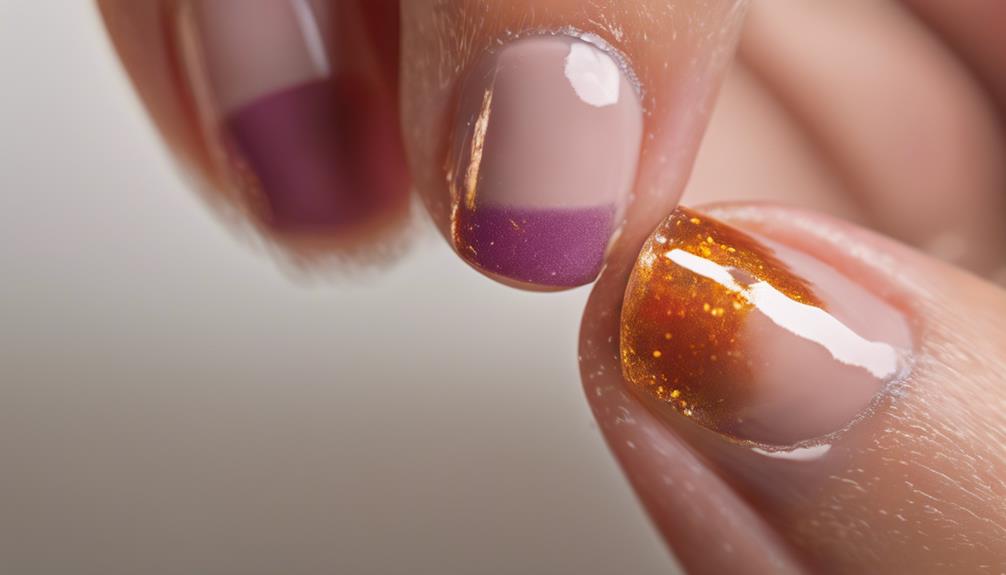
The application of nail polish can impact the overall health and condition of the nails. While nail polish is a popular way to express creativity and style, it is essential to consider its effects on nail health. One potential concern is that frequent use of nail polish can lead to discoloration, dryness, and weakening of the nails. Some nail polishes contain chemicals that may strip the nails of natural oils, causing them to become brittle and prone to breakage. Additionally, the process of applying and removing nail polish can weaken the nail bed and cuticles over time.
To mitigate these effects, it is advisable to take breaks between manicures to allow the nails to recover and breathe. Using a nourishing base coat and hydrating nail treatments can also help maintain nail health while still enjoying the benefits of nail polish. Being mindful of the ingredients in nail polish and opting for healthier formulas can contribute to preserving the overall health and strength of your nails.
Tips for Healthy Nails
Maintaining optimal nail health requires a combination of proper care, attention to detail, and consistent nurturing practices. To keep your nails healthy and strong, consider the following innovative tips:
- Hydrate from Within: Drink plenty of water and consume foods rich in vitamins and minerals to promote nail health.
- Moisturize Regularly: Apply a nourishing nail and cuticle oil to keep your nails hydrated and prevent brittleness.
- Protect Your Nails: Wear gloves while doing household chores or gardening to shield your nails from harsh chemicals and prevent breakage.
- Trim and File Properly: Trim your nails straight across and smooth the edges with a file to prevent ingrown nails and maintain a neat appearance.
- Let Your Nails Breathe: Take breaks from nail polish to allow your nails to recover and breathe, promoting natural strength and vitality.
Removing Nail Polish Safely
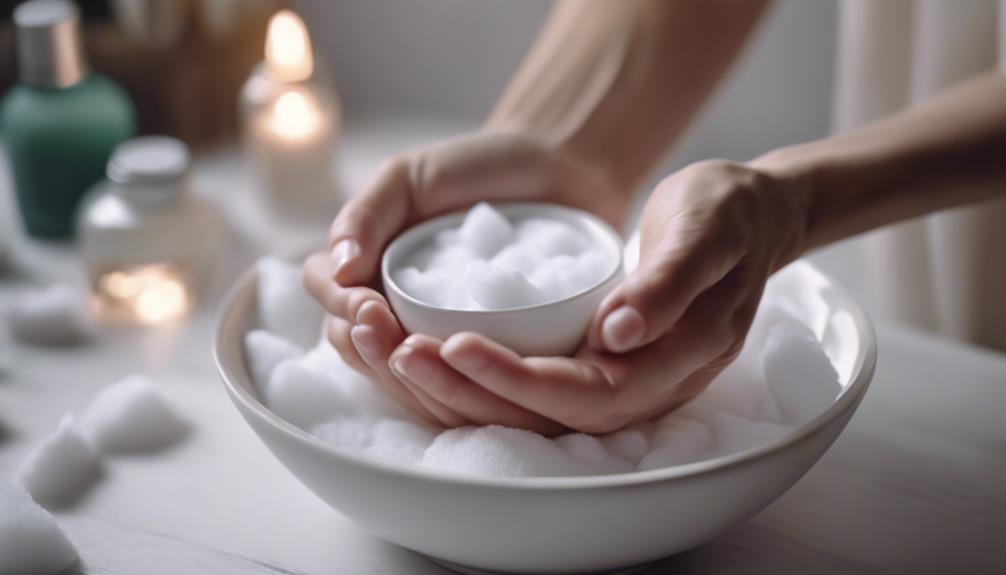
When it comes to removing nail polish safely, it's crucial to employ gentle techniques that protect the nail bed. Following the removal process, remember to moisturize your nails to prevent dryness and brittleness. Maintaining overall nail health is key, so consider incorporating regular maintenance practices into your routine.
Gentle Polish Removal Techniques
Implementing gentle techniques for removing nail polish is essential to maintain the health and strength of your nails. To safely remove nail polish, consider the following innovative methods:
- Acetone-Free Polish Remover: Use a remover that is gentle on nails.
- Soaking Method: Soak a cotton ball in remover, then place it on the nail for a few seconds to dissolve the polish.
- Gentle Pressure: Avoid rubbing vigorously; instead, apply gentle pressure to lift off the polish.
- Wooden Cuticle Stick: Use a wooden stick to lift stubborn polish without damaging the nail.
- Moisturize After: Follow up with a moisturizing treatment to keep nails healthy and hydrated.
Moisturize After Removal
Following the safe removal of nail polish, it is crucial to promptly moisturize your nails to maintain their health and hydration. Opt for moisturizers containing ingredients like glycerin, shea butter, or vitamin E to nourish your nails and cuticles effectively. These ingredients help replenish moisture lost during the polish removal process, preventing dryness and brittleness. Additionally, consider using specialized nail oils or creams that target nail strength and flexibility. By moisturizing your nails post-polish removal, you can promote nail health and prevent issues such as peeling or breakage. Embracing innovative nail care products that prioritize hydration will leave your nails looking and feeling their best.
Nail Health Maintenance
In maintaining nail health, it is essential to safely remove nail polish to prevent damage and promote overall nail well-being. When removing nail polish, consider the following innovative tips:
- Use Acetone-Free Polish Remover: Opt for gentle formulas to prevent excessive drying of the nails.
- Avoid Harsh Scrubbing: Be gentle when rubbing off nail polish to prevent weakening the nail plate.
- Moisturize After Removal: Hydrate nails and cuticles with a nourishing oil or cream post polish removal.
- Give Nails a Break: Allow nails to breathe by going polish-free for a few days between manicures.
- Consider Nail Strengthening Treatments: Utilize products that can help strengthen nails and improve their overall health.
Nail Care Beyond Polish
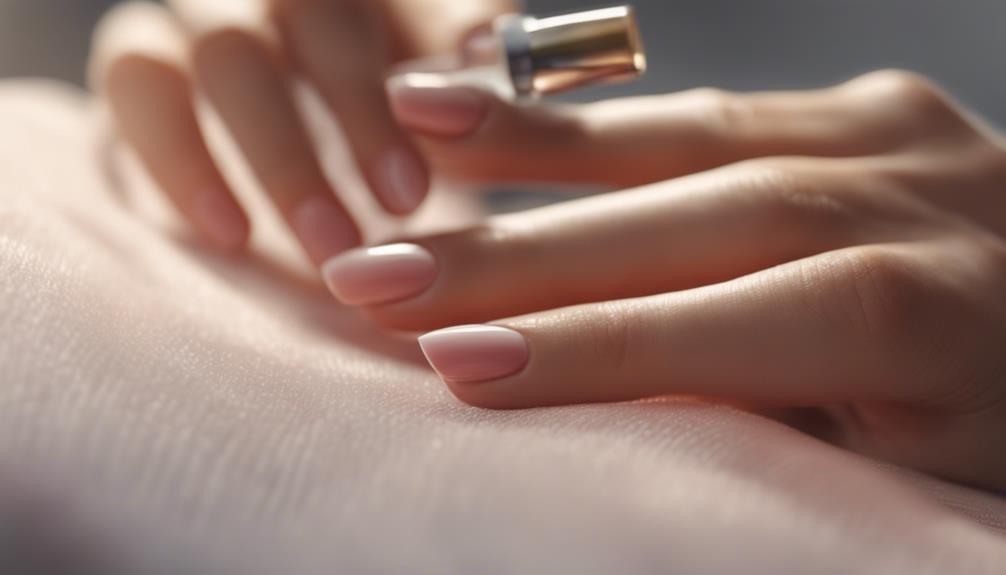
What additional steps can be taken to ensure optimal nail care beyond the application of polish? While nail polish can enhance the appearance of nails, it is essential to prioritize overall nail health. Incorporating a holistic approach to nail care can promote strength, resilience, and natural beauty. Beyond polish, consider the following innovative practices to maintain healthy nails:
| Nail Care Beyond Polish | Description |
|---|---|
| Hydration | Moisturize nails and cuticles regularly to prevent brittleness and breakage. |
| Nail Trimming | Keep nails at a moderate length to prevent snagging and promote healthy growth. |
| Cuticle Care | Gently push back cuticles and avoid cutting them to maintain nail health. |
| Nail Strengthening Treatments | Utilize strengthening serums or treatments enriched with vitamins and minerals. |
| Balanced Diet | Ensure a diet rich in nutrients like biotin, zinc, and iron for strong, healthy nails. |
Frequently Asked Questions
Can Wearing Nail Polish Cause Fungal Infections on the Nails?
Wearing nail polish can potentially create a favorable environment for fungal infections due to moisture accumulation. It is important to practice good nail hygiene, allow nails to breathe periodically, and use quality nail products.
Is It Safe to Use Nail Polish While Pregnant or Breastfeeding?
Wearing nail polish while pregnant or breastfeeding requires caution due to potential chemical exposure. Opt for pregnancy-safe formulas and well-ventilated spaces. Consulting healthcare providers and adhering to safety guidelines can help mitigate risks associated with nail polish use during these periods.
Can Nail Polish Weaken the Nails and Make Them More Prone to Breakage?
Painting nails with nail polish can lead to weakened nails and increased fragility, making them prone to breakage. The chemicals in polish can strip the nails of natural oils, causing damage. Opt for nail-strengthening treatments to maintain healthy nails.
Are There Any Long-Term Effects of Regularly Using Nail Polish?
Regularly using nail polish may lead to long-term effects such as discoloration, dryness, and weakening of the nails. Prolonged exposure to certain chemicals in nail polish can also cause allergic reactions or other dermatological issues.
Can Certain Nail Polish Colors or Brands Cause Allergic Reactions or Skin Irritation?
Certain nail polish colors and brands can indeed cause allergic reactions or skin irritation due to the chemicals used in their formulations. It is essential to be mindful of ingredients and opt for hypoallergenic options to minimize potential risks.

